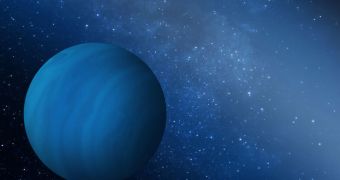A new set of computer simulations has revealed that the solar system may have contained an additional planet when it first developed, an object that was extremely massive by the look of things. The space body must have been ejected a long time ago, the team adds.
Certain interpretations of the new model even indicate that two massive planets may have accompanied Jupiter, Saturn, Neptune and Uranus, and that both were ejected due to gravitational interactions with the other members of the solar system.
In order to understand how this might have been possible, it's important to understand that the region surrounding the newly-formed Sun was an extremely chaotic environment, where planets used their own mass to slingshot other space bodies across the vastness of space.
Some of these objects may have eventually been recaptured by the gravitational pull of the Sun, and then returned to currently-occupied positions, but others may have not been as fortunate. Scientists say that the two potential planets may have drawn the cosmic short stick.
It took billions of years for the 8 planets in the solar system to settle in their current positions. At times, the four large giants migrated towards the Sun, nearly reaching the orbit now occupied by Mars. In such circumstances, the dangers of gravitational interactions increase significantly.
These scenarios were recently simulated about 6,000 times by a team of investigators at the Southwest Research Institute (SwRI), in Boulder, Colorado. As more and more simulations were being conducted, the team made a remarkable discovery.
They learned that the solar system had just a 2.4 percent chance of ending up in its current configuration if it formed featuring only four giant planets. If that were the case, then the system would have been much more violent, resulting in a significantly different configuration than the current one.
Planetary scientist David Nesvorny says that the model of a solar system featuring five heavy planets had a 24 percent chance of ending up in a similar configuration as seen today. This represents a 1,000 percent increase in probability from the previous scenario.
“The work raises interesting questions about the early history of the outer solar system. For example, traditionally, most research was focused on the giant planets, their satellites, Kuiper belt objects, and their interaction – that's what we have in the outer solar system now,” the expert adds.
“But how about Mars to super-Earth-size bodies? Have such objects formed on the outer solar system and were eliminated later? If not, then why?” says Nesvorny, who was the leader of the research team.
“This is just a beginning. It will need quite a lot of work to see if there actually was the fifth planet. I am not fully convinced myself,” he says. The new study has been published in the latest online issue of the esteemed Astrophysical Journal Letters, Space reports.

 14 DAY TRIAL //
14 DAY TRIAL //